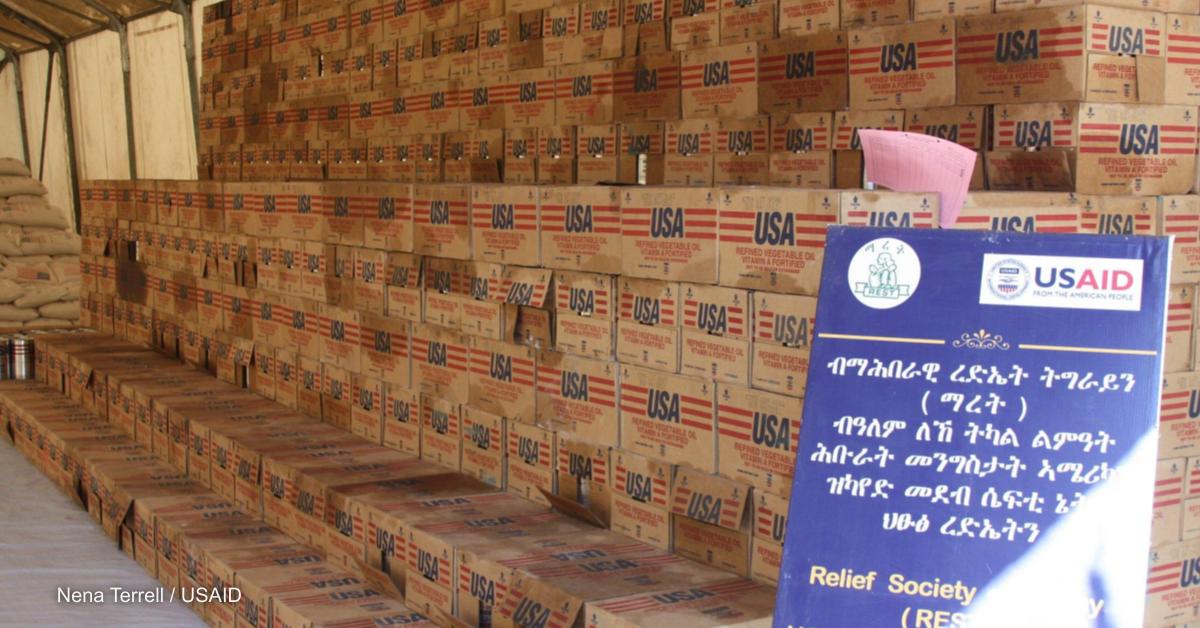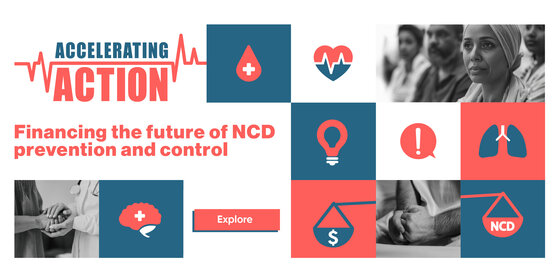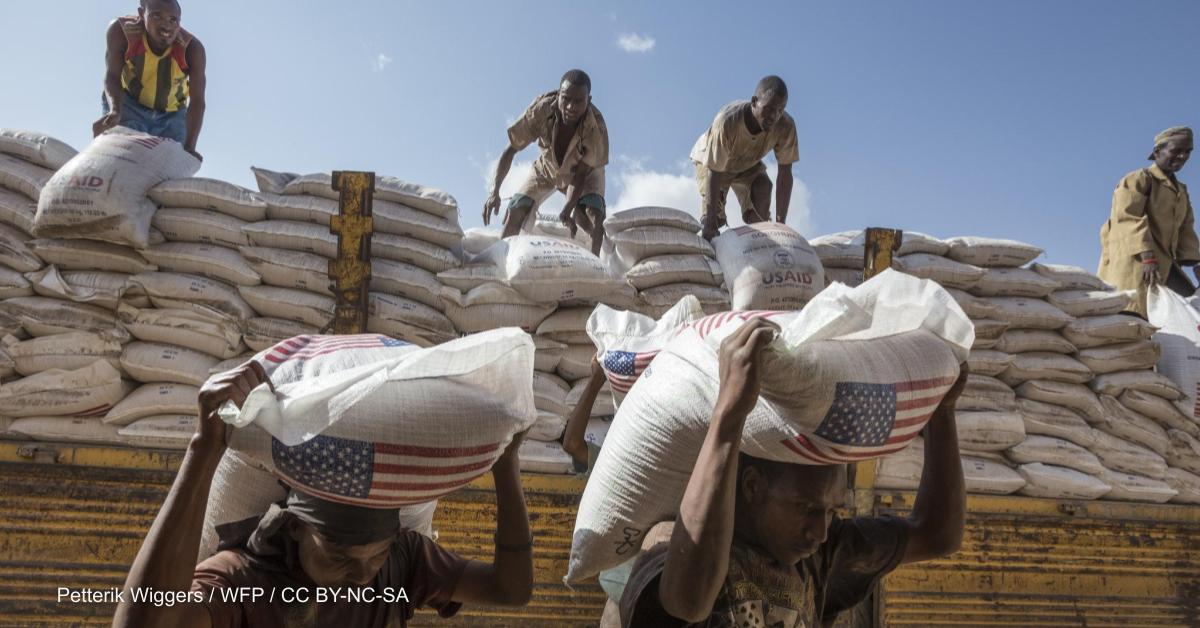|
With USAID in turmoil and food systems transformation sidelined, what’s next for global food systems?
|
|
|
We’re barely three weeks into the new Trump administration, but the relentless cycle of announcements, policy shifts, and déjà vu moments of “can he do that?” makes it feel much longer.
The big question we’re obsessed with answering: What does all this mean for global food systems? The United States is the world’s largest funder of food aid, and also invests in critical scientific research on things such as climate-resilient crops. Now, with the administration’s 90-day foreign aid review underway and USAID totally gutted, we’re looking for clues as to how things might proceed. And we started with Project 2025, the right-wing Heritage Foundation’s 900-page blueprint for reshaping U.S. policy, released last year. One thing seems certain — the U.S. won’t be talking about “transforming food systems” again anytime soon. Project 2025 explicitly states: “The federal government does not need to transform the food system.” The plan calls for scrubbing the phrase from U.S. Department of Agriculture, or USDA, communications and shifting focus to “efficient agricultural production” without “government interference.”  At the core of this is the belief that climate change isn’t just overblown — it’s a hoax, according to U.S. President Donald Trump. That means programs hoping to survive the review may want to downplay their push for climate-smart agriculture and place less emphasis on sustainability. Some in Trump’s orbit even argue that climate policies are causing food insecurity. “The whole green agenda … boy is that causing poverty and hunger,” Max Primorac, a former senior adviser at USAID during Trump’s first term, told my colleague Michael Igoe last year. It’s a sentiment echoed in Project 2025, to which Primorac contributed. It states: “The Biden Administration’s extreme climate policies have worsened global food insecurity and hunger. … Farmers in poor countries can no longer afford natural gas-based fertilizers that are key to high yields.” Meanwhile, USDA has been ordered to scrub climate change from its websites, Politico reports. So what happens to U.S. support around the world for programming on food systems transformation? At the United Nations’ COP28 climate summit in 2023, for example, USAID committed $100 million to CGIAR for climate-smart agricultural innovation through 2025. And as a bilateral aid partner, it has contributed millions to community-supported agriculture programs in many countries. Whether that support continues — or gets scrapped — remains an open question. One major risk to all of this, according to Jack Bobo, executive director of the UCLA Rothman Family Institute for Food Studies and former senior adviser for global food policy at the U.S. Department of State, is that food, nutrition, and agriculture programs may now be reevaluated based on their political framing rather than their actual results. The upside? That framing can be adjusted to emphasize more “America First” messaging. Take the long-standing focus on “orphan” and indigenous crops — often positioned as climate solutions. While that’s true, these crops also stand on their own merits: They’re often more nutritious, require fewer inputs, and perform well in tough growing conditions. And that means smallholder farmers can be more self-sufficient. “Am I optimistic that they could frame their conversation in a way that’s quite consistent with the policies of the new administration? Yes, absolutely,” Bobo says. The question is whether the Trump administration wants to allow any programs to proceed and how funding levels will look by the review period’s end. ICYMI: How Trump’s US aid stop-work order affects global food aid Background reading: A US conservative’s plan to beat the ‘aid industrial complex’ More background: What MAGA has planned for USAID — and the world |
|
Not yet a Devex Pro member? Start your 15-day free trial today to access this event and all our exclusive content and events! |
|
Here’s what else you need to know
|
|
Our global team of reporters and editors has been hustling to deliver scoops and insights into one of the most chaotic weeks in global development:
|
|
SPECIAL NOTICE
Development finance trends to watch in 2025
Development finance is under increasing pressure. The big question now is whether efforts to mobilize private capital can move beyond the rhetoric, and what sort of instruments will help us get there. Register now to join Devex and a panel of experts to discuss all these questions and more at this critical moment for development finance. |
|
Chopping block blues
The United States is the biggest contributor to the United Nations, so it’s no surprise that the U.N. is on edge. The suspension of foreign assistance is already having a “severe” or “moderate” impact on nearly 20 U.N. agencies, according to a confidential U.N. survey obtained by my colleague Colum Lynch.
Most agencies anticipate at least some disruption to their budgets, operations, and programs. Among the expected fallout: Interrupted programs, delays in work plans and key deliverables, and cuts to missions, events, monitoring, and communications. Some agencies even warn of staffing reductions and weakened operational capacity. UNICEF, for one, has already imposed a temporary freeze on external hires, except in emergencies, sources tell me. The World Food Programme — which, according to the survey, receives about a third of its total funding from the U.S. — has also received letters from U.S. partners regarding the funding pause. But so far, WFP said in the survey that it hasn’t taken any mitigation measures and has none planned. The broader consequences? According to those surveyed, the ripple effects will be felt worldwide, including setbacks to progress on the U.N. Sustainable Development Goals in Africa — such as goals on achieving zero hunger, good health and well-being, and gender equality. Scoop: UN sketches global map of mayhem from US aid freeze |
|
BRINGING HOME THE BACON
Your next job?
|
|
Chew on this
The U.S. Senate Agriculture Committee unanimously approved the USDA secretary nominee on Monday. Next up: A full Senate vote, though that's unlikely to happen this week. [Politico] Egypt has signed a $700 million agreement with the Islamic Trade Finance Corporation to bolster its food security efforts. [Reuters] Half of Sudan’s population, or 24.6 million people, face acute food insecurity, Médecins Sans Frontières warned on Monday. [Middle East Eye] It’s been a hectic week. Here’s a small dose of calm in the form of the best agriculture-related pictures from 2024. [BBC] 
|
|
Thank you for reading this week’s Devex Dish, edited by Tania Karas, copy edited by Florence Williams, and produced by Yula Mediavillo. Have a news tip? Email [email protected].
Forwarded by a friend?
Sign up here to receive the Devex Dish directly.
|
|
Devex thanks our partners for supporting our newsletters.
Our editorial content remains independent. Interested in partnering with us? Get in touch. |
|
Connect with us:
|







